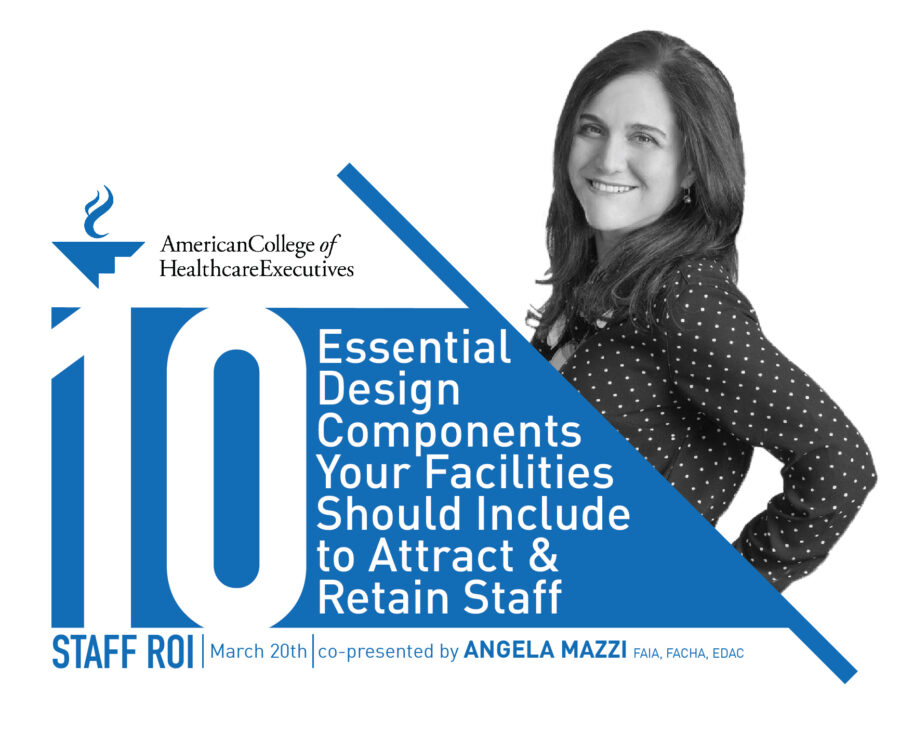Insights
Jun 2, 2023 _ insights
Investing in Staff: Design Strategies for Attracting, Supporting, and Retaining Healthcare Workers
I wish there were an easier way of saying this, but there is not. The healthcare industry—specifically, its staff—is in crisis.
Data on the well-being of healthcare staff is startling. According to Sg2, a healthcare industry consulting group, 61% of physicians and over 50% of nurses report feelings of burnout. Burnout not only impacts quality of care, but it is causing a mass exodus from the industry. 22% of nurses say they may leave their position within the next year. According to the same study, 6.5 million lower wage healthcare workers are expected to permanently leave their jobs in the next five years, and only 1.9 million are ready to take their place.
Given this situation, healthcare systems need to address burnout as a very real and systemic issue. While pay and benefits, leadership engagement, and education/training matter, the design of spaces in healthcare are an important way to support the well-being of their workers.
Recently, I joined Steve Templet, AIA, ACHA of Sizeler Thompson Brown Architects at the American College of Healthcare Executives (ACHE) Annual Congress to discuss this issue. We advocated on behalf of The American College of Healthcare Architects (ACHA) for ways the built environment can strengthen operational strategies that healthcare organizations are already implementing. We demonstrated how certain types of spaces and design features contribute to staff well-being, which in turn impacts ROI.
It’s time to treat staff as the precious resource they are by building accommodations that support their work and provide regenerative opportunities.
Our presentation was called, “Staff ROI: 10 Essential Design Components Your Facilities Should Include to Attract and Retain Staff.” You can view it here.
For more insights from Angela, you can read “If You Build It, Will They Come? The Problem of Staff Respite in Healthcare Facilities,” “Improving Healthcare Resilience Through An Equity Focused Framework,” or “A Healing State of Mind: Salutogenesis & Stress in Cancer Care Environments.”
 Angela Mazzi FAIA, FACHA, EDAC is a principal at GBBN. Harnessing studies on human psychology, research on our biological need for nature, a focus on clinical workspaces, and experience with Lean strategies, Angela creates exceptional environments that empower patients and practitioners. She regularly presents and publishes her research in industry and peer reviewed journals and is sought out by Healthcare Design Magazine, the New York Times, and other publications to share her healthcare expertise with their readers.
Angela Mazzi FAIA, FACHA, EDAC is a principal at GBBN. Harnessing studies on human psychology, research on our biological need for nature, a focus on clinical workspaces, and experience with Lean strategies, Angela creates exceptional environments that empower patients and practitioners. She regularly presents and publishes her research in industry and peer reviewed journals and is sought out by Healthcare Design Magazine, the New York Times, and other publications to share her healthcare expertise with their readers.




